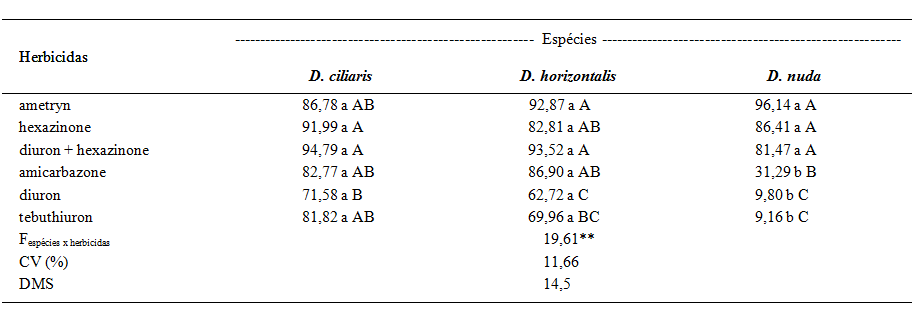This study aimed to investigate the tolerance or susceptibility of crabgrass species (Digitaria ciliaris, D. horizontalis and D. nuda) to herbicides that target photosystem II (PSII), by fluorescence technique using the electron transport rate (ETR) through PSII as an indicator. An experiment was conducted under a factorial arrange (3x6), with three species of crabgrass and six treatments (ametryn, hexazinone, diuron+hexazinone, amicarbazone, diuron, tebuthiuron and control) applied in post-emergence. The ETR through PSII was monitored over time and the plants dry weight measured at 21 days after application. A numerical value of the ETR inactivation was calculated from the data collected. The results showed that the three crabgrass species studied are susceptible to ametryn and hexazinone (ETR inactivation value higher than 10,000). Moreover, diuron and tebuthiuron provided lower ETR inactivation for D. nuda (3,585 and 3,497, respectively) and higher rates for D. horizontalis and D. ciliaris (more than 10,000), whereas amicarbazone showed intermediate inactivation rate for D. nuda (7,967). Monitoring the ETR showed to be an efficient form to verify the herbicides performance in the different species studied here
Digitaria ciliaris (Retz.) Koel; Digitaria horizontalis Willd; Digitaria nuda Schumach; electron transfer rate (ETR)

 Thumbnail
Thumbnail
 Thumbnail
Thumbnail


